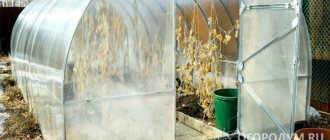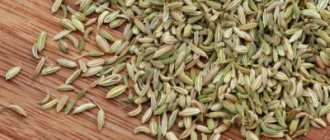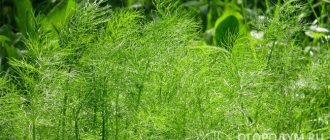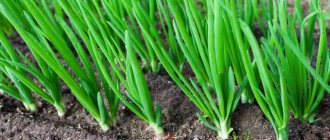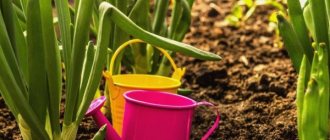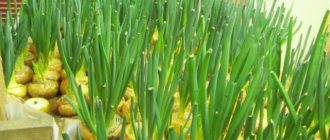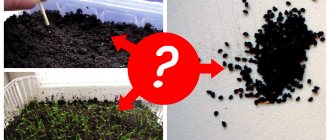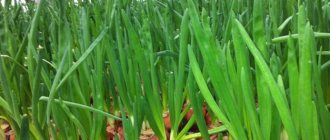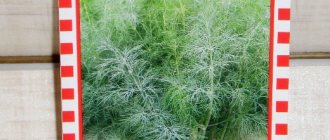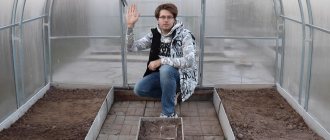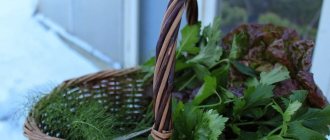Author's rating
Author of the article
Yakov Pavlovich
Professor, Head of the Department of Vegetable Growing
Articles written
153
The benefits of green onion feathers have been proven by many years of experience in cultivating this vegetable crop. The juicy, fragrant leaves of the plant contain a huge amount of vitamins and nutrients necessary to improve immunity and the proper functioning of the human body. Onions grown as greens will organically fit into the daily diet, and planting and caring for the crop in open ground will not cause difficulties even for novice gardeners.
Combined planting method
I don’t know, maybe it’s called something else and, most likely, it’s known not only to me. But I tried to combine the bridge method with the belt method, planted the seedlings at the end of March, now (May 2) my wife and I are eating greens with all our might. What I've done?
I made furrows about 3 cm deep. The width of my bed is about 1 meter, and the distance between the rows is 10 cm. I planted the onions close to each other, this is similar to the bridge method. I sprinkled the bulbs themselves with a layer of earth, 2-3 cm thick.
As a result, the bed is easy to care for; its width allows you to pull out weeds without trampling the ground and without straining. The onions sprouted together, now the height of each leaf is about 20 cm. That is, we provided ourselves with onions for greens. Try my method and post your results in the comments.
Growing conditions
In order for onion greens to grow well, you need to observe the temperature and light conditions.
Onions love light, so they need to be provided with good lighting. At the beginning of growth (first 14 days), the plant should be illuminated for 10-12 hours a day. During the active growth phase, light is needed constantly - 20-24 hours a day. In this case, the bulb will not rot and the leaves will not turn yellow.
The optimal temperature for active growth is from 23 to 25 degrees. Under such conditions, onions grow up to 30 cm in height in 14 days. Overheating is harmful to the plant. At 26-28 degrees, the feather quickly withers and loses its juiciness. At 30 degrees it stops growing.
How to grow onions for greens in winter?
If you already have a bed of onions and also have a greenhouse, getting feathers in the winter will not be difficult. To do this, before the first frost, dig up the plants and, together with a lump of earth, transfer them to the greenhouse.
Place the dug up onions under the racks or directly on the surface of the soil (depending on the type of greenhouse you have) tightly together. Then pour in a solution of cow dung prepared at a ratio of 1:10. This measure will help the onions to take root faster in a new place, which means you will get the harvest earlier.
Remember that when forcing onions to harvest, the temperature in the greenhouse should be between 14-16 0C.
By the way, you can do the same with chives if you use 2-3 year old plants. Feathers grown in this way are of high quality, and you can easily sell them in the winter.
Harvest and storage
Green onions are ready for cutting when the length of the feather reaches approximately 30 cm. You cannot delay harvesting - the feathers greatly lose their presentability (they shrivel, turn yellow), and their taste also suffers. As soon as they began to bend toward the ground, it was definitely time.
In order for the feathers to continue to grow, existing ones must be cut off above the shoot growth point. Use sharp scissors or a small pruner for this. Such tools cause minimal damage to the plant. At home, you can simply carefully pinch off individual feathers as needed, gradually moving from the periphery to the center.
If you leave the harvest of green onions in the garden too long, its quality will deteriorate sharply.
You can keep the feather fresh for 2-3 weeks by placing it in the refrigerator. There is no need to wash it beforehand. There are alternative storage methods:
- In glass jars. Place small dry feathers in a jar and close it tightly with a lid. If they are not broken or bent in the process, the greens will remain fresh for about a month. The container should be placed in a cool, dark place. By filling the onions with vegetable oil, you will extend the shelf life by another 4-6 weeks, but in this form it is not suitable for all dishes.
- In a plastic bag. Unwashed feathers are placed in a bag of a suitable size, tied, and several holes are made with a knife or fork for ventilation. Keep the package in the cellar or basement.
- In thick paper or linen napkin. It is strictly forbidden to use newspapers - printing ink contains lead. The feather is washed, the water is allowed to drain, wrapped in paper or cloth, and lightly sprayed on top with a spray bottle. The package is wrapped in cellophane and put away in a cellar or pantry.
In the refrigerator, onions are stored in a special compartment for vegetables and fruits.
Dried and frozen onions are stored the longest without losing their beneficial properties (two years and a year, respectively). You can dry it either naturally or in an oven or a special dryer. To freeze the feathers, you must first finely chop them. The onions are also salted and fermented.
Before freezing, chop the green onions - this way they take up less space
Let's summarize the material
If you are too lazy to re-read the article again, I will make a brief summary in the form of step-by-step instructions. So, to grow onions for greens, you need:
- Choose the right variety (use the State Register of Breeding Achievements).
- Prepare the beds, destroy weeds, apply fertilizers.
- Prepare the bulbs for planting.
- Plant the seedlings using a pavement, strip or combined method.
- Water, loosen, and remove weeds in a timely manner.
Now you know how to plant onions on greens. If you have any comments or want to share your experience, write comments. It is advisable to indicate your real email address, then I can contact you and, if you want, share your experience with readers.
How to plant onions on greens and get twice as much yield
Growing methods
At home
Growing onions at home is quite simple and profitable. Already 2-3 weeks after planting it can be harvested. There are several ways to grow onions: in soil, in water, in sawdust, in a bag, in egg cells, in plastic containers, in hydroponics.
In the ground
To grow onions in the ground, you will need a container, prepared bulbs and a substrate (as a rule, a universal one is used).
The substrate needs to be moistened. The water should be at room temperature. Place the onion in a glass upside down and leave for 1-2 days. After this, transfer it to the ground and press it lightly. It is not recommended to deepen the bulb too much, otherwise rotting may begin inside it. Until greenery appears, the temperature should be kept at 25-27 degrees. When the feathers reach 2 cm in height, it should be reduced to 22 degrees.
The container with plantings should not be placed on a radiator or placed near heating devices, otherwise the soil and feathers may dry out. Onions require a warm place, no draft, and the presence of artificial lighting.
Traditionally, onions are grown at home in universal soil.
In water
If there is no substrate for growing onions for greens, you can use a tray with water. First, the bulb is germinated to develop its roots. Next, pour water into a glass or other container, place an onion stand on it so that only the roots are in the water, and the bottom of the head should not touch the water. Water needs to be added periodically as it evaporates.
The easiest way to grow onions on a windowsill is to place their roots in a container of water.
In egg cells
This method is often used to grow onions at home for family needs due to its cheapness and convenience.
The cell is disinfected with hydrogen peroxide, the bottoms are cut out and placed in a tray with water. The roots of the bulbs sprout. To do this, place it in a glass of warm water for 1-2 days, not forgetting to change the water. Then the top is cut off, the dry husks are removed, dried and placed in a cell with the root down so that they reach the water in the pan. In this case, the bottom of the bulb should not touch the water. The water in the pan is changed at least once a week. If the water turns green, you need to put a few tablets of activated carbon into it. It is better to change it and first let it settle at room temperature. It is necessary to provide the onion with natural or artificial lighting.
To grow onions, you can use cardboard, foam or plastic cells, but the former are preferable because they are breathable and biodegradable.
In the sawdust
The advantages of sawdust are breathability, moisture, and warmth. As a result, the green mass grows very quickly. In addition, no fertilizer is required. Pressed or loose sawdust is suitable.
First, you need to pour boiling water over them, pour in a little manganese solution to disinfect and reduce acidity. They should swell and increase in volume.
When growing onions in sawdust, it is possible to get a fairly large harvest in just a few weeks.
The bulbs are placed tightly on sawdust, after removing the dry husks from them. It is not recommended to recess the heads. Every 3-4 days it is necessary to water. After harvesting, the sawdust should be thrown away. They are not reused.
Advice! To grow onions, it is recommended to use sawdust from deciduous trees only. Conifers, due to their high resin content, spoil the taste. It is advisable to give preference to fruit wood, such as apple.
In the package
Another way to grow onions is in a plastic bag. Moistened paper napkins, sawdust or cotton wool are placed on its bottom. Onions with the tops cut off are placed on the moistened material. The bag must be buried to prevent air from entering inside. When the greens hatch and the feathers grow to 6 cm, you need to open the bag and slightly moisten the roots. In about 10-14 days, the greens will grow to the desired size.
The easiest way to get green onions is to sprout them in a plastic bag
In plastic containers
It is necessary to prepare clean plastic bottles with a volume of 3-5 liters. You need to cut holes in them around the circumference of the container or in a checkerboard pattern, which should be smaller than the size of the bulbs. The diameter of the bulbs used is 4-6 cm, it is better not to take smaller ones.
Cover the bottles with soil, which can be brought from the garden plot or bought at the store. Usually a universal substrate is used. Insert the onions with the tops cut off into the holes made. The roots must be inside the container. It is recommended to water 1-2 times a week, and also spray with a spray bottle. Plastic containers are placed on a pallet.
An original and practical option is to plant onions on greens in plastic bottles
On hydroponics
This method allows you to grow onions even in a city apartment. Important advantages are no dirt and compactness: containers can be installed in several tiers. Using this technology, onions are grown without the use of soil (in artificial media). This method is very popular because it saves space and produces large yields during the cold season. It is usually used when growing greens for sale. To do this, you need a special hydroponic installation, which you can buy or make yourself.
Is it possible to grow ginger at home?
You should know that not every onion variety is suitable for growing hydroponically.
Experts recommend the following:
- Seryozha;
- Union;
- Ural family;
- Bessonovsky;
- Strigunovsky;
- Seven-year-old.
Bulbs from the fall harvest are best. Specimens of approximately the same size are selected - 2-3 cm in diameter. Planting material must be prepared before planting. The bulbs are bubbled to stimulate growth. This process consists of placing the material in a bucket of water with wood ash heated to 38 degrees, placing an aquarium compressor in it, turning it on and leaving it for 12 hours. Then you need to cut off the tops as much as possible, clean the bottoms, without in any way damaging the pulp. Thanks to these manipulations, roots and greenery appear faster.
To grow, you will need an airtight container with a hard bottom and a tight-fitting lid. Its approximate size: length - 80 cm, width - 40 cm, height of sides - 20 cm. This container must be wrapped in light-proof material so that the roots are in complete darkness. The lid should have holes for the bulbs (for the indicated sizes there will be 50-60 of them).
Prepared bulbs are planted on mats or slabs of mineral wool, abundantly soaked in a solution of fertilizers, which are sold in specialized stores. Such substrates are suitable for reusable use. The artificial substrate must always remain moist. The distance between the bulbs is 2 cm, between the rows - 4 cm.
Interesting! Growing hydroponically allows you to collect 10 kg of greenery from 1 square meter. meters. For 1 sq. You can plant approximately 10-12 kg of bulbs per meter; 1 kg yields approximately 800-900 g of greenery.
In the greenhouse
You can plant onions on greens in a greenhouse using seeds and bulbs.
In greenhouse conditions, onions grow much faster than in open ground. The disadvantage of this method is that the greenhouse requires quite expensive maintenance. It needs to be equipped with lighting, heating, shelving with drawers, and an irrigation system. In addition, it is necessary to provide access to fresh air.
Using a greenhouse is a good idea for growing onions for sale.
It is more efficient to grow feathers from sets. Small bulbs yield a harvest in 95% of cases; there are no special problems when growing.
Growing onions for greens from seeds is more troublesome. To plant them, first make furrows with a distance of 15 cm between them. It is not recommended to deepen the seeds. Sowing should be frequent so that the bulbs are small and there is more greenery. When sowing in spring, you need to take 25% less seeds than when sowing before winter. If the greenhouse is heated, the daytime temperature in it should be maintained at 18-20 degrees, and at night it should be lowered to 15 degrees. When the feather appears, it needs to be increased to 22 degrees. Lighting should be present for 12-14 hours. If the greenhouse is not heated, after sowing before winter it is necessary to mulch with humus or peat. The layer of peat chips is at least 5 cm. At the end of winter, the covering layer must be removed, water the onions and stretch the film until the sprouts appear.
In the open ground
Planting in open ground is carried out in spring and autumn. The soil must be prepared in advance; if not prepared, the harvest will be significantly lower. In spring, planting begins with the onset of warmth, in autumn - before frost.
It is important to choose the right place. The area should be well lit. It is advisable that tomatoes, zucchini, pumpkin, and potatoes grow on it before this. The soil should not be acidified. There should be no weeds in the soil. The soil needs to be moistened within a few days.
Furrows are prepared for planting seedlings. The distance between the bulbs is 6 cm, between the beds - 16 cm. If planting occurs in the fall, mulching is required (layer thickness - about 7 cm). In the spring, a film greenhouse is built in case of frost.
If you follow the rules of agricultural technology, good yields of high-quality green onions can be obtained in open ground
Variety of salads is in fashion
The modern assortment of seeds allows you to grow lettuce varieties that are unusual in appearance and original in taste: spicy, tart, sweet, bitter, oily, neutral. You can choose leaf, cabbage, chicory varieties. They are grown in garden beds in summer and on window sills and in greenhouses in winter. Many require a special climate, careful care and are loved by pests. However, most early species are unpretentious and easy to care for.
In April - May they sow in open ground:
| Variety | Features of sowing |
| Early ripening leaf lettuce | Ripens within 2 weeks after germination. The seeds are soaked and kept in potassium permanganate. Planted in sunny areas and in partial shade. The distance between rows is at least 15 cm, sowing depth is 1.5-2 cm. When thinning, leave 7-10 cm between plants |
| Lollo rossa (leaf) | Delicate, slightly bitter, very impressive thanks to the decorative, wavy leaves along the edges. Does not throw out flower stalks, so it can be sown all season long |
| Iceberg (headed) | It resembles cabbage, but the head is looser. The leaves are tender, juicy, almost neutral in taste, slightly sweet. Loves well-lit areas, sufficient watering, nitrogen fertilizers |
| Two-row thin-leaved or wild Italian arugula | The leaves of this perennial are thicker and tougher than those of ordinary arugula. The sharp mustard flavor is more pronounced. Can be planted as a border plant and not reseeded annually - beautiful, convenient, economical |
| Watercress | Cultivated varieties with piquant pungency and slight sourness prefer light or partial shade, generous watering. They are afraid of the cruciferous flea beetle, just like the iceberg. Sowing is carried out from April until the end of the season |
| Field lettuce or valerianella | One of the most cold-resistant among salads. Seeds are sown very early, in early April. At high temperatures the arrow throws out. Does not like excess moisture |
Valerianella oleracea (pictured) has a pleasantly tart taste; its small leaves are well suited for decorating dishes
Reviews
Reviews about seed growing of onions are mostly positive. This is the method that most gardeners use.
Irina, Zheleznogorsk: “I grow green onions only with seeds. In my garden there is a perennial trumpet plant, which I sowed once in the winter, and shallots, which I plant every year. As fertilizer I use a mixture of silage with the addition of ash. I make it from nettles, which I infuse in water for at least a month. I don't use any chemicals. I make sure to hang some sticky tapes near the beds. I have no problems with diseases or pests. Already in May I cut off the onion feathers of the batun.”
Igor, Lipetsk: “I grow chives from seeds, I like their rich aroma and slightly pungent taste. I plant it near a bed of cucumbers to attract pollinators. I came across a description of a slime in a store and planted it last year. Very tasty onions with a slight garlic flavor. Goes well with meat and salads.”
Further care
In order to grow a high-quality harvest of green feathers on your plot, in a greenhouse or in a vegetable garden, proper plant care is necessary.
Green onions require timely watering, fertilizing, loosening the beds and removing weeds.
Watering
Vegetable crops are watered moderately; plants react negatively to both a lack of moisture and its excess. Therefore, irrigation work is carried out once every 5-7 days. If the weather is hot, dry, the amount of watering is adjusted upward.
See also Onion Exhibition: Planting and growing from seeds
Water the crop with settled water, pouring the moisture into the furrows with the onions.
Top dressing
To quickly germinate plantings, organic fertilizers are used. Nitrogen-containing fertilizers are recommended for growing greens. Thanks to this substance, the growth of green mass of plants occurs faster.
During the growing season, and especially after the first harvest, the plantings are fertilized with infusions of cow or bird manure.
Loosening the soil
Loosening the soil helps saturate the rhizomes of plants with oxygen and nutrients necessary for the growth and development of the crop. The procedure for loosening the beds is combined with measures to water the plants and remove weeds.
Possible diseases: treatment and prevention
To avoid damage to plantings by diseases and pests, it is enough to follow proper care and crop rotation. But if the plantings are still affected by fungi, viruses or harmful insects, the greens will have to be treated with biological or chemical means of protection.
The main signs of damage to green onions:
- The appearance of rust on green feathers is characterized by yellowish voluminous spots. The fungus quickly affects the planting area, as a result the greenery dries out and dies. To combat and prevent damage, fungicides and preparations based on copper sulfate are used.
- If the onion at the base is covered with a gray coating, most likely the plant is affected by neck rot. The fungus quickly destroys the bulb, the base of the plant becomes covered with a black coating, as a result of which the plant dies.
- White spots on feathers appear due to damage to the plant by Alternaria, or downy mildew. The fungus spreads quickly, and instead of spots, the leaves become covered with a brown coating and die.
- Powdery mildew on green feathers appears as grayish-purple spots. The fungus subsequently spreads throughout the plant, causing a coating of black mold. For control and prevention, plants are sprayed with biological or chemical protection agents.
The most common pests that attack green feathers are onion flies and thrips. If harmful insects appear, plants are treated with insecticides.
Many novice vegetable growers often wonder why green onions turn yellow in the garden and what to do about it.
There are many reasons for the yellowing of a plant’s leaves, ranging from a lack of moisture and nutrients in the soil to damage by diseases or pests. Therefore, in order to fix the problem, it is necessary to find out the cause of its occurrence.
Don't forget about herbs
Perennials like wild Italian arugula provide delicious flavor without requiring intensive care. Among them are wild garlic and lovage, undeservedly forgotten by many, which also have healing properties.
Dandelion leaves are a storehouse of nutrients. Soaked in salt water for half an hour, they become an excellent base for a spring salad. And young nettle leaves are used for soups, pies and sauces.
Early shoots of ordinary peas have a pleasant sweetish taste of unripe “milk” grains
But borage (borage) is especially interesting and loved by many housewives. It is enough to plant it once, and then it will multiply by self-sowing, like a weed. The cucumber-scented leaves are useful for salads. The showy blue flowers attract bees. But the Colorado potato beetle avoids this plant, so it is recommended to plant borage next to potatoes and eggplants.
No wonder they say: “young and green.” Greenery is a sign of youth, health, and spring. Grow greens in your garden and spring in your soul!
